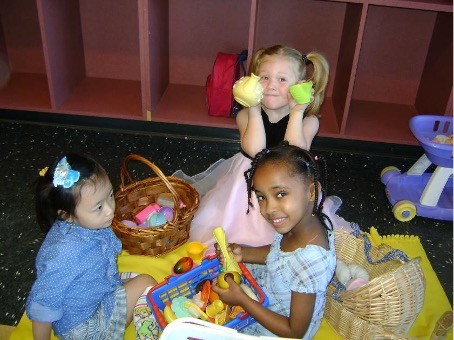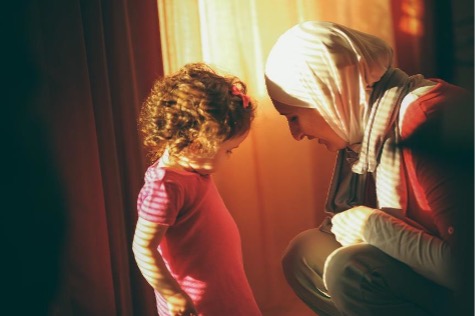1 Introduction

Developmentally Appropriate Practices (DAP)
What are Developmentally Appropriate Practices (DAP) and how do they pertain to me, my classroom and the students under my care? The National Association for the Education of Young Children (NAEYC) is the premier professional organization of early childhood educators. Its position statement on developmentally appropriate practice (DAP) provides the following definition:
NAEYC defines “developmentally appropriate practice” as methods that promote each child’s optimal development and learning through a strengths-based, play-based approach to joyful, engaged learning. Educators implement developmentally appropriate practice by recognizing the multiple assets all young children bring to the early learning program as unique individuals and as members of families and communities. Building on each child’s strengths—and taking care to not harm any aspect of each child’s physical, cognitive, social, or emotional wellbeing—educators design and implement learning environments to help all children achieve their full potential across all domains of development and across all content areas. Developmentally appropriate practice recognizes and supports each individual as a valued member of the learning community. As a result, to be developmentally appropriate, practices must also be culturally, linguistically, and ability appropriate for each child. (NAEYC, 2020a, p. 5)
Exercise
Learn more about developmentally appropriate practice by completing the interactive lesson by Laura Hutton Overview of Developmentally Appropriate Practices.
How does knowledge and implementation of DAP improve my teaching?
Teachers and childcare professionals who successfully implement DAP in their learning environments create spaces for children to grow, learn, interact, play, and develop in educationally and culturally rich settings. Curricular decisions are based on proven principles of child development, as well as knowledge of effective early learning practices. Curriculum is designed with each child’s individual needs and interests in mind and is focused on helping all children successfully meet developmental goals within the school’s conceptual framework. Good curriculum allows for the flexibility needed to individualize the activities while still meeting mandated standards.
Each and every child, birth through age 8, has the right to equitable learning opportunities—in centers, family childcare homes, or schools—that fully support their optimal development and learning across all domains and content areas. Children are born eager to learn; they take delight exploring their world and making connections. The degree to which early learning programs support children’s delight and wonder in learning reflects the quality of that setting. Educators who engage in developmentally appropriate practice foster young children’s joyful learning and maximize the opportunities for each and every child to achieve their full potential. (NAEYC, 2020a, p. 5)
Video Moment
Watch the video “Using Dry Erase Board” by High Scope US to see how a teacher in a developmentally appropriate classroom approaches a writing activity.
DAP in Practice
Before learning about DAP, I started my two-year-old class each day with a 20-minute circle. We talked about the day of the week and the weather and counted how many days had passed in the month. I held up the children’s names and had each child identify their own name. Then, we went through color and shape flashcards.
I HATED circle. I was constantly having to stop to remind the children to sit down, stop talking, and keep their hands to themselves. My aide spent most of circle chasing children around the room and returning them to the carpet.
After I learned about DAP, my approach to circle changed. My circle is now only 5- to 10-minutes long. We sing and move to a good morning song then talk about something special that is happening that day. Sometimes this is a special activity we have planned; sometimes is it a flower that they can see blooming on the playground; sometimes it is the weather. I always pick something that directly impacts the children. We also play one game, like finding something in the room that is a certain color or shape.
What a difference! The children now love circle and are eager to join me. My aide is free to support the children’s learning and I can focus on engaging the children in meaningful conversations. Not only is circle a lot more fun for all of us, but I’ve seen the children make so much progress with their academic skills now that they’re learning them in a more hands-on and meaningful way!
What Would You See in a DAP Classroom?
- open-ended art projects
- hands-on experiences with real objects
- emphasis on children doing tasks for themselves
- small group activities focused around children’s interests
- children offered choices
- scaffolding for children at different skill levels
- room contents and organization reflect children’s input
- flexibility
- emphasis on problem- solving
- boxes with quiet activities for children who don’t nap
- integrated curriculum
What Wouldn’t You See in a DAP Classroom?
- art projects that are all supposed to look the same
- rote learning and memorization
- adults do tasks for the children while they wait
- mostly adult-directed, large group lessons
- forced activities selected by teacher
- tasks designed for children to succeed or fail
- adult-oriented décor
- rigid adherence to schedule and plans
- emphasis on complying with adult directions
- teacher frustrated with non- napping children
- instruction on isolated academic skills

What role do relationships play in a DAP classroom?
Teachers who implement developmentally appropriate practice consciously take steps to form strong, caring relationships with the children in their care. Healthy teacher-student relationships help develop all aspects of a child’s development.
When young children have a positive relationship with their caregiver, they are more likely to build healthy peer relationships and less likely to exhibit behavior problems. Healthy relationships during the preschool years enhance a child’s self-esteem and form a template for future relationships with adults, such as those with elementary school teachers.
Video Moment
Watch these videos by Conscious Discipline that show teachers engaged in relationship- building activities with children.
The power of relationships has been proven by neuroscience. Brain imaging shows that the parts of the brain where learning occurs are more active when in a positive emotional climate. Responsive interactions with young children support the development of strong neural connections. Positive back-and-forth interactions, sometimes called “serve and return,” support the development of the brain architecture necessary for strong communication skills, social skills, and self- regulation.
Video Moment
Learn more about how interactions with young children build brain architecture by watching the brief video “Five Steps to Brain Building: Serve and Return” by Center on the Developing Child at Harvard University.
Is DAP supported by research?
Decades of research support the effectiveness of developmentally appropriate practice. Studies show that children who engage in the type of authentic and active learning integral to DAP have more advanced academic skills than do children in classrooms using teacher-directed activities focused on memorization and rote learning. In addition, it has been shown that preschoolers whose teachers focus on all areas of learning, another key element of DAP, have stronger school readiness skills then do preschoolers whose teachers focus solely on academic skills. DAP is particularly effective at fostering the development of language skills, social skills, and self-regulation, all of which are cited by kindergarten teachers as very important skills for school success.

